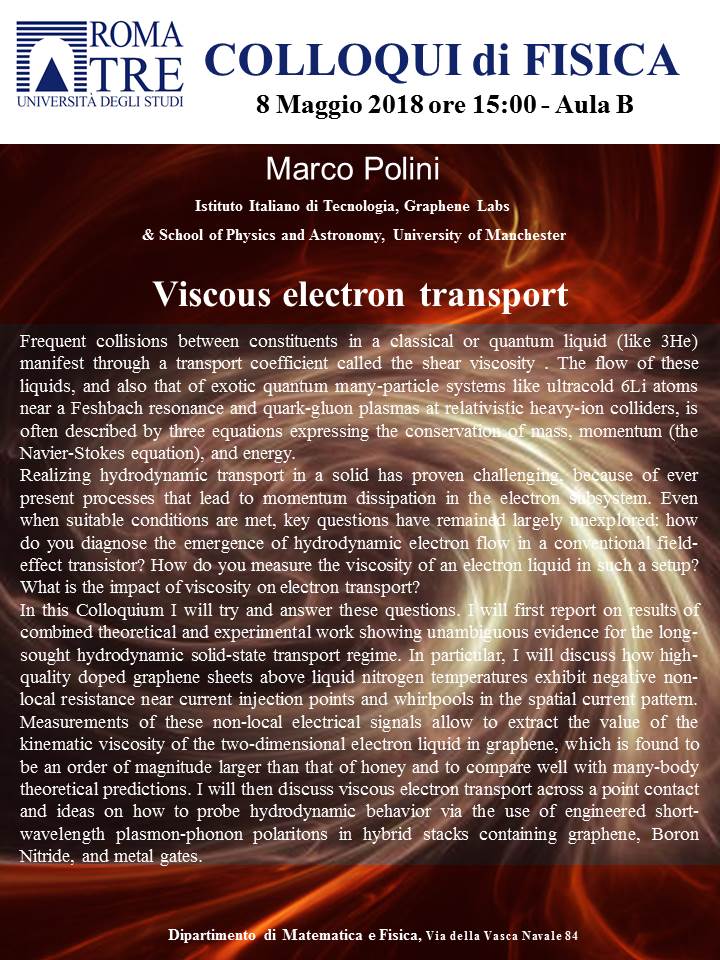
Attività del Dipartimento
Colloqui di Fisica Viscous electron transport Marco Polini 08-05-2018 - 15:00 AULA B - Via Della Vasca Navale 84
Frequent collisions between constituents in a classical or quantum liquid (like 3He) manifest through a transport coefficient called the shear viscosity [1]. The flow of these liquids, and also that of exotic quantum many-particle systems like ultracold 6Li atoms near a Feshbach resonance [2] and quark-gluon plasmas at relativistic heavy-ion colliders [3], is often described by three equations expressing the conservation of mass, momentum (the Navier-Stokes equation), and energy. References [1] J.C.Maxwell, Philos. Trans. R. Soc. London 156, 249 (1866). 
 [2] C. Cao, E. Elliott, J. Joseph, H. Wu, J. Petricka, T. Schäfer, and J.E. Thomas, Science 331, 58 (2011). [3] B.V. Jacak and B. Müller, Science 337, 310 (2012). [4] R.N. Gurzhi, Sov. Phys. Uspekhi 11, 255 (1968). [5] I. Torre, A. Tomadin, A.K. Geim, and M. Polini, Phys. Rev. B 92, 165433 (2015). [6] D. Bandurin, I. Torre, R.K. Kumar, M. Ben Shalom, A. Tomadin, A. Principi, G.H. Auton, E. Khestanova, K.S. NovoseIov, I.V. Grigorieva, L.A. Ponomarenko, A.K. Geim, and M. Polini, Science 351, 1055 (2016). [7] F.M.D. Pellegrino, I. Torre, A.K. Geim, and M. Polini, Phys. Rev. B 94, 155414 (2016). [8] A. Principi, G. Vignale, M. Carrega, and M. Polini, Phys. Rev. B 93, 125410 (2016). [9] R.K. Kumar, D.A. Bandurin, F.M.D. Pellegrino, Y. Cao, A. Principi, H. Guo, G.H. Auton, M. Ben Shalom, L.A. Ponomarenko, G. Falkovich, I.V. Grigorieva, L.S. Levitov, M. Polini, and A.K. Geim, Nature Phys. 13, 1182 (2017). [10] M.B. Lundeberg, Y. Gao, R. Asgari, C. Tan, B. Van Duppen, M. Autore, P. Alonso-Gonzalez, A. Woessner, K. Watanabe, T. Taniguchi, R. Hillenbrand, J. Hone, M. Polini, and F.H.L. Koppens, Science 357, 187 (2017). org: MELONI Davide Allegati: [locandina] |



